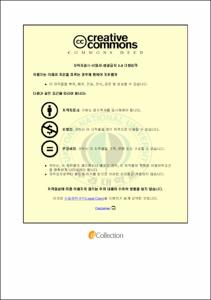어선의 해난 인명 피해 저감 연구
- Abstract
- A study on reducing the casualty of fishermen
in marine accidents
Wook Sung KIM
Department of Fisheries Physics, Graduate School,
Pukyong National University
Abstract
Recently, as the international fishing conditions are changing by the marine environment, increasing of seafood consumption and the reorganization of international marine order, the fisheries of Korea reach a crossroad of crisis and redevelopment. Under these circumstances, It's a severe problem that many skillful fishermen as a principle of the fisheries die or missing from marine casualties. In this study, for the reducing the casualty of fishermen, selected for the high risk accident types, and analyzed the accident reason which need to be strongly controlled with the statistics and a written verdict form KMST(Korean Maritime Safety Tribunal) and proposed countermeasure. And for putting a telecommunication system for reducing the casualty to practical use, investigated usability of TRS communication system and the performance of GPS automatic position transmitter(APT) which can be utilized for the survival, search and rescue of the victim.
The purpose of the control of the marine casualties is to protect crew's life and wealth rather than to decrease the number of occurrence of the accidents. Therefore, when evaluating the risk of a certain accident that already happened, we should consider both the current possibility of accident and current impact on crew. So, I applied the risk of the casualty by accident type, and could define collision, sinking, and capsize as which need to be strongly controlled.
The reason of defined accident analyzed from sequential event analysis. The result were as follows.
In the fishing vessel, collision accident had the immediate cause of negligence of look out(82.2%). And underlying causes were the characteristics of fishing vessel and fishing method, lack of suitable complement, fatigue, the prejudice or ignorance on steering and sailing rules. The immediate causes of the capsize accident were top heavy and heavy seas under conditional factors, and about prejudice or ignorance on vessel operation was defined as the human errors. And the important cause of the sinking accidents were lost opportunity for avoiding heavy sea, inappropriate heavy sea ship handling, and poor control for watertight. And found out that the fishing vessel's accident were very suddenly occurred and specially fishermen of costal fishing boats were vulnerable to the risk of wreck, and the other was that the factors which has direct impact on the casualty was unwearing the life jackets and unobserving emergency procedures and searcher and rescuer's rapidness knowing of accident in terms of pre-accidential security factors.
So, in terms of reducing the casualty, for preventing the accident, need the enhancement of education for correction and coaching about navigational rule, fishing vessel control in heavy sea state include stability, navigational warning information telecommunication method, emergency procedure against fishermen andthe basic of fishing method for the cargo ship officer. In terms of systemic control approach, need to expand the range of the certificate of competency 5 tones. And need to make control criteria for entrance and departure to be tuned to sea state scale of maritime police or navy by the fishing vessel's size.
For improving the condition of victim's life saving and rescue, especially for the vessels below 5 tones, need to develop and spread the control system for emergency communication. Conducted experiments with TRS and CDMA in the east, west and the south sea of Korea. As a result, could verify the usability of the TRS as an emergency communication system device as it can provide stable position and voice information to the boundary of 50km far from the coast. Conducted experiment with the GPS APT which is attachable to a self-inflatable life jacket on the sea. As a result, found out that with the SPOT which uses low earth orbit satellite, could figure out the circular error about 14.21m, receive success rate 86.5~94.1%, so was sufficient characteristic for searching the drifting crew.
- Issued Date
- 2013
- Awarded Date
- 2013. 2
- Type
- Dissertation
- Publisher
- 부경대학교
- Affiliation
- 부경대학교 대학원
- Department
- 대학원 수산물리학과
- Advisor
- 이주희
- Table Of Contents
- 제1장 서 론 1
1.1. 연구 배경 1
1.2. 연구 사례 4
1.3. 연구의 목적과 구성 6
제2장 어선 해양 사고의 위험도 분석 8
2.1. 서 언 8
2.2. 재료 및 방법 10
2.2.1. 해양 사고 원인 분석 방법 10
2.2.2. 인명 피해 위험도 정량화 13
2.3. 결과 및 고찰 16
2.3.1. 사고 발생률과 인명 피해 위험도 16
2.3.2. 충돌 사고의 원인 분석 18
2.3.3. 전복 사고의 원인 분석 30
2.3.4. 침몰 사고의 원인 분석 32
2.3.5. 충돌, 전복, 침몰 사고의 사망․실종 대응 33
2.4. 요 약 38
제3장 해양 사고 예방을 위한 연안 어선용 통신 체계 구축 40
3.1. 서 언 40
3.2. 재료 및 방법 43
3.3. 결과 및 고찰 48
3.3.1. TRS 통신 가능 해역 및 수신율 48
3.3.2. TRS 위치 데이터의 어선 모니터링 51
3.4. 요 약 53
제4장 상시 착용 구명동의용 위성자동위치발신기의 활용 55
4.1. 서 언 55
4.2. 장치 및 방법 57
4.3. 결과 및 고찰 60
4.3.1. 육상 고정점에서의 측위 정도 60
4.3.2. 해상에서의 신호 수신율 64
4.4. 요 약 67
제5장 종합 고찰 68
참고 문헌 76
- Degree
- Doctor
- Files in This Item:
-
-
Download
 어선의 해난 인명 피해 저감 연구.pdf
기타 데이터 / 3.18 MB / Adobe PDF
어선의 해난 인명 피해 저감 연구.pdf
기타 데이터 / 3.18 MB / Adobe PDF
-
Items in Repository are protected by copyright, with all rights reserved, unless otherwise indicated.